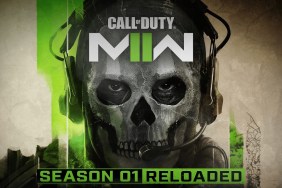The war to end all Endwars.
The era of hands-free headsets has given everyone an alibi for talking to him- or herself. If someone catches you muttering aloud your caffeine-fueled machinations for world domination, you can now give them a smile, touch your hand to your ear to feign adjusting your headset, and go about your business. You’re not crazy, you’re just “talking on the phone”.
[image1]As a voice-controlled real-time strategy game, Tom Clancy’s Endwar gives us yet another excuse for indulging our headset-justified craziness. Over the last week, my neighbors have been listening to me say choice phrases like, “Unit 2 Move to Zulu”. And when my units get uncooperative, the folks next door have heard me shout memorable lines like, “Goddammit!, Unit 4, Move to Fucking Alpha before I WMD Your Ass!” Prior to the days when we could talk to our cars and our vacuum cleaners, the neighbors would have assumed I had a strange predilection for referring to my children by unit numbers, and for referring to their beds by Greek letters and African tribes. Thankfully, these days no one bats an eyelash.
Using voice control gives Endwar an interesting edge over just about every other console-based RTS. The genre has long suffered from its dependence on the hundreds of possible keys and key combinations available only on PCs, and the few successful console RTSs have found innovative ways to consolidate complex command systems.
While Endwar’s voice commands do overcome the inherent limitations of console controllers, many other standard features of the genre have been eliminated in order to make the command system more streamlined. There are relatively few vehicle types, very few pieces of infrastructure to manage, very few commands, and very little strategy. Your vehicles do much of the decision making on their own—often unwisely—and movement relies much more on A.I. path-finding than on your own placement strategy. Yes, it’s simple, but it’s also far too much out of your direct control.
While the voice control system is simple and effective, I quickly discovered that it was even simpler and more effective to use the game’s one-button control scheme. If you select a unit and point at a destination, it moves there. If you select a unit and point at an enemy, it attacks that enemy. If you select a foot unit and point at cover, it takes cover. Once I realized this was essentially a one-button game, I tossed the voice system aside as an utterly useless novelty.
[image2]Moreover, once you begin using the SitRep screen—an overview map of the entire battlefield and units—you realize that the default unit POV screen is also totally useless. While you only have access to SitRep when there’s a command vehicle on screen, you’ll have one available often enough that the main game screen proves more trouble than it’s worth. But to Endwar’s credit, the game is surprisingly fun, engaging, and simple when played from the SitRep screen.
Each battle—whether on- or offline—is very small in scope and short in length. Few battles last longer than 30 minutes, and many are much shorter. You’ll find none of the 2-3 hour epic battles that characterize many of the best games in the genre. While Endwar speeds up the genre and makes battles much more manageable, you’ll never feel very invested or connected to any particular skirmish or to your faction.
Personal investment is a crucial element of the RTS genre, but you won’t experience much of it here. The few lead characters associated with each faction—Soviet, European, or American—are little more than talking heads with no more depth or motivation than “Let’s get ‘em!” The story is a basic World War III scenario: an orbiting US military station is shot down during launch, and the world—the Northern Hemisphere at least—is plunged into war.
The online Theater of War mode is built around a promising premise. You join the war as it’s unfolding in a persistent environment. You take part in an ongoing large-scale war by fighting one small battle against another player. Each round lasts a day, and territories are won or lost based on what happened during that round. The maps change dynamically as the war unfolds based on that day’s skirmishes.
[image3]However, as with the single-player game, there’s little personal investment in the persistent world. You don’t ever feel like you’re part of a larger war because you’re almost totally disconnected from the other players in your faction. You can also change factions any time, making the idea of contributing to an ongoing war effort utterly meaningless. True, you lose your units’ experience and rank when you switch factions, but since your rank and experience affects who and how you fight, you lose very little by switching factions. There’s no sense of investment and, thus, no sense of commitment.
Graphically, the game is not at all up to current standards. The default POV screen demonstrates Endwar’s unimpressive visual presentation with drab texture work and a spotty framerate, but since you’ll likely spend as much of the game as possible in the easier-to-use SitRep screen, those visual shortcomings don’t really matter. There isn’t much to see in this game, and Endwar’s earliest environments are every bit as dull as those in its later levels.
The core rock-paper-scissors unit mechanic is similar to some RTS greats, but the game tries so hard to simplify gameplay at every turn that it ends up shaving off too much of what makes RTS games so fun to play in the first place. You’ll feel very little attachment to your units or faction, and even the game’s promising online play doesn’t give you anything to care deeply about. The voice control system works, but since it’s easier to play without it, the impressive voice recognition technology ends up seeming little better than a briefly fun toy.
But if you still feel like expressing your inner paranoid schizophrenic, fire up Endwar, hook up your headset, turn the mic off, and rant away.
-
Impressive voice-recognition technology
-
Solid core RTS gameplay
-
Promising online mode
-
Simple play mechanics
-
. . .a tad too simple
-
Lackluster visuals
-
No personal investment











